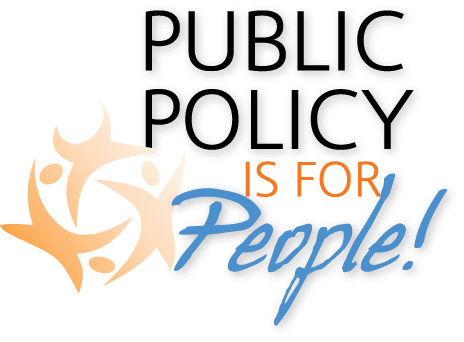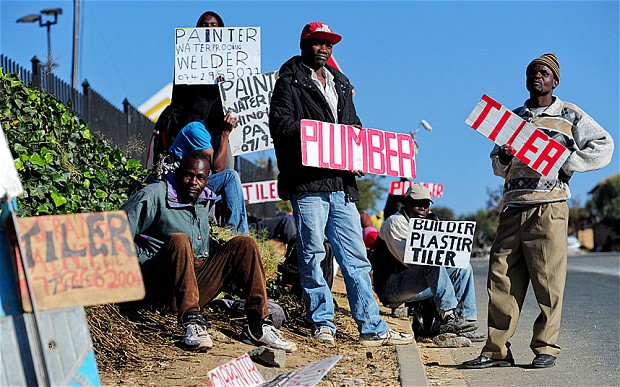Content begins here
REBECCA MADIGA
Public policy, Industrial 4.0 and poverty, societal devision and poverty
18 Apr 2017, 15:17
ASSIGNMENT 4 N.R MADIGA 26131854
PUBLIC POLICY

If an American is in need of emergency medical care, the first place that most seek treatment is through the emergency room at their nearest hospital. Even if the person has no medical insurance, they can be sure they will receive treatment if they go to the emergency room rather than a doctor. According to Peter (1998) the reason they can count on this service is because the men and women in Congress have spent countless hours crafting public policies around health care that outline how providers will serve their patients.
Public policy is the means by which a government maintains order or addresses the needs of its citizens through actions defined by its constitution. If this definition sounds vague or confusing, it's likely because a public policy is generally not a tangible thing but rather is a term used to describe a collection of laws, mandates, or regulations established through a political process (Anderson, James: 1975)
In the United States, for example, there have been recent changes to the health care system that now require every citizen to have health insurance. After a series of debates, evaluations, and analysis, the federal government arrived at the conclusion that this would be in the best interest of citizens and began crafting bills, insurance mandates, and other pieces of legislation to establish a system for how Americans receive health care treatment. Through this legal and political process, they have created a new public policy, which contains several different parts in order for it to serve its purpose (Anderson, James: 1975).
INDUSTRY 4.0
Industry 4.0 is the current trend of automation and data exchange in manufacturing technologies. It includes cyber-physical systems, the Internet of things and cloud computing (Kagermann, Wahlster and Helbig: 2013) .Industry 4.0 creates what has been called a "smart factory". Within the modular structured smart factories, cyber-physical systems monitor physical processes, create a virtual copy of the physical world and make decentralized decisions. Over the Internet of Things, cyber-physical systems communicate and cooperate with each other and with humans in real time, and via the Internet of Services, both internal and cross-organizational services are offered and used by participants of the value chain.
POVERTY AS SOCIETAL DIVIDE
Poverty
Poverty is hunger. Poverty is lack of shelter. Poverty is being sick and not being able to see a doctor. Poverty is not having access to school and not knowing how to read. Poverty is not having a job, is fear for the future, living one day at a time. Poverty has many faces, changing from place to place and across time, and has been described in many ways. Most often, poverty is a situation people want to escape. So poverty is a call to action for the poor and the wealthy alike a call to change the world so that many more may have enough to eat, adequate shelter, access to education and health, protection from violence, and a voice in what happens in their communities (world bank:2008)
In addition to a lack of money, poverty is about not being able to participate in recreational activities; not being able to send children on a day trip with their schoolmates or to a birthday party; not being able to pay for medications for an illness. These are all costs of being poor. According to the World bank(2008) those people who are barely able to pay for food and shelter simply can’t consider these other expenses. When people are excluded within a society, when they are not well educated and when they have a higher incidence of illness, there are negative consequences for society. We all pay the price for poverty. The increased cost on the health system, the justice system and other systems that provide supports to those living in poverty has an impact on our economy.
While much progress has been made in measuring and analyzing poverty, the World Bank Organization is doing more work to identify indicators for the other dimensions of poverty. This work includes identifying social indicators to track education, health, access to services, vulnerability, and social exclusion.
Poverty and social inequality
The gulf between the poor and rich of the world is widening. Within the UK, the financial gap between the wealthy and the poor is not narrowing and differences in health between social classes I and V are becoming greater (Smith et al, 1990). Poverty and social inequality have direct and indirect effects on the social, mental and physical well-being of an individual. It is important to note that poverty and inequality are closely linked. Wilkinson (1997) believed that income inequality produces psychosocial stress, which leads to deteriorating health and higher mortality over time. However, the association between income inequality and life expectancy is slowly disappearing and is no longer widely accepted. Those who live in deprived communities, where there is under-investment in the social and physical infrastructure, experience poor health, resulting in higher mortality for those of lower socio-economic class. The effects of income inequality also spill over into society, causing stress, frustration and family disruption, which then increase the rates of crime, homicide and violence (Wilkinson, 1996).
There are several obstacles, deficits and threats to health inherent in poverty. It is the poor who are exposed to dangerous environments, who (if employed) often have stressful, unrewarding and depersonalising work, who lack the necessities and amenities of life and who, because they are not part of the mainstream of society, are isolated from information and support. The inverse association between socio-economic level and risk of disease is one of the most pervasive and enduring observations in public health (Kaplan et al, 1987). It has been known for a long time that the lowest-income groups are more likely to suffer negative effects of ‘risky’ health behaviors than their less poor counterparts. These ‘maladaptive’ behaviors are not necessarily undertaken with a harmful intent, but may be regarded as coping behaviors to provide comfort or relief from stressful lives. Moreover, people in lower socio-economic classes by virtue of their life circumstances are exposed to more stressors, and with fewer resources to manage them and greater vulnerability to stressors, they are doubly victimized. Poverty is associated with many long-term problems, such as poor health and increased mortality, school failure, crime and substance misuse. The relationship between occupational class and mortality is evident from survey in the 1970s, which showed that the mortality rate among men aged 20–64 years was almost twice as high for those in class V as for those in class I, and by the early 1990s it was almost three times as high (Drever & Bunting, 1997)
WILL INDUSTRY 4.0 ENLARGE OR REDUCE POVERTY AS SOCIETAL DIVIDE?
Industry 4.0 will reduce poverty because the importance and potential of information and communication technologies (ICTs) to develop economies has been demonstrated through various studies around the globe. For example where development is hampered by dispersed populations, small sizes and vast ocean distances, ICT can help overcome these restrictive circumstances, of digital divide within society, by empowering the poor. An attempt is made to illustrate that, despite various initiatives and strategies designed by the governments in power, poverty in other continents is still daunting and has in fact increased by almost 33% over the last 10 years. Therefore, it becomes prudent to look at government policies and e-governance initiatives in Africa basically Congo for example and analyze the reasons as to why results are not being achieved at the grass-roots level. Based on findings from a rapid appraisal among various stakeholders, the article highlights that e-governance initiative thus far could not be largely effective due to lack of participatory processes in e-governance and ICT practices. According to Mohammad (2006) Community perception of e-governance and understanding of the issue are explored and it is argued that public awareness of e-governance is critical for projects to work.
There is also a new policy in South Africa called the "Industry 4.0 – New Tasks for Innovation Policy"
REFERENCE LIST
Anderson, James E. 1975. Public Policy Making. Praeger: New York
Kaplan, G. A., Haan, M. N, Syme, S., et al (1987) Socio-economic status and health. In Closing the Gap: The Burden of Unnecessary Illness (eds R. W. Amler & H. B. Dull), pp. 125–129. New York: Oxford University Press.
Drever, F. & Bunting, J. (1997) Patterns and trends in male mortality. In Health Inequalities: Decennial Supplement (eds F. Drever & M. Whitehead). DS series no. 15. London: Stationery Office.
Wilkinson, R. G. (1996) Unhealthy Societies: The Afflictions of Inequality. London: Routledge.
Wilkinson, R. G. (1997) Health inequalities: relative or absolute material standards. BMJ, 314, 591–595.
Smith, G. D., Bartly, M. & Blane, D. (1990) The Black Report on socioeconomic inequalities in health: 10 years on. BMJ, 301, 373–377.
World Bank, 2008.
http://www2.gnb.ca/content/gnb/en/departments/esic/overview/content/what_is_poverty.html. Date of access ( 18/04/2017)
Kagermann, H., W. Wahlster and J. Helbig, eds., 2013: Recommendations for implementing the strategic initiative Industrie 4.0: Final report of the Industrie 4.0 Working Group
John, Peter (1998). Analysing Public Policy. Continuum.
Unemployment as South Africa's challenge that cripples the pace of economic growth
19 Feb 2017, 14:38

